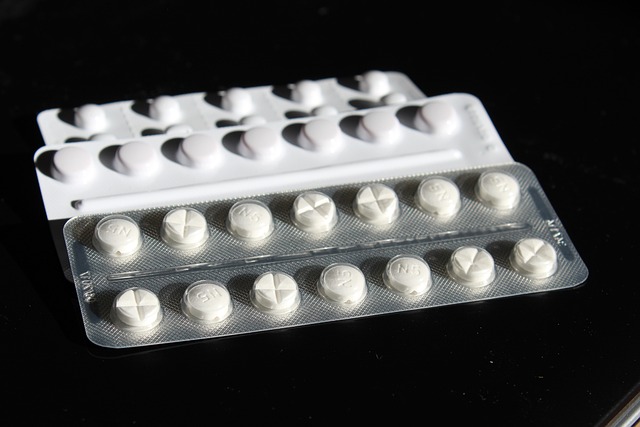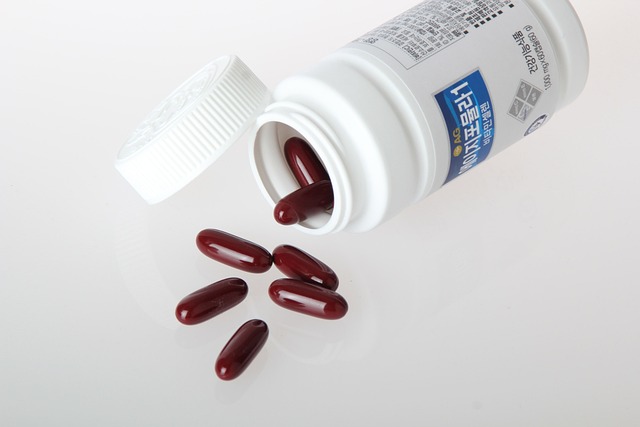Semaglutide, a GLP-1 receptor agonist, offers dual benefits in managing type 2 diabetes and promoting weight loss. Therapeutic monitoring, focusing on key biomarkers like HbA1c levels, BMI, lipid profiles, and CRP, is crucial for optimizing semaglutide treatment plans. Regular assessment enables healthcare providers to adjust dosages, detect adverse effects early, and ensure personalized care that maximizes benefits while minimizing risks. While challenges include the dynamic nature of glucose regulation and resource constraints, future prospects are promising with continuous monitoring technologies aiming to transform patient care through real-time tracking and precise treatment adjustments.
Semaglutide, a novel glucagon-like peptide-1 (GLP-1) receptor agonist, has emerged as a powerful tool in managing type 2 diabetes and weight management. Therapeutic monitoring is essential to optimize semaglutide treatment plans, ensuring its effectiveness and safety. This article explores the role of monitoring in evaluating semaglutide’s impact, focusing on key biomarkers and strategies. We discuss challenges, the fine-tuning of dosage, and future prospects for continuous therapeutic surveillance, providing insights into maximizing the benefits of semaglutide therapy.
Understanding Semaglutide and Its Therapeutic Uses

Semaglutide is a groundbreaking medication that has revolutionized the management of type 2 diabetes and weight management. It belongs to a class of drugs known as glucagon-like peptide-1 (GLP-1) receptor agonists, which mimic the effects of a natural hormone in the body. This therapy has gained significant attention due to its dual benefits: improving blood sugar control and aiding in weight loss. By mimicking GLP-1, semaglutide stimulates insulin secretion when blood sugar levels are high while suppressing glucagon release, leading to better glycemic control.
In therapeutic monitoring, healthcare providers assess the effectiveness of semaglutide treatment plans by regularly evaluating key markers. This includes measuring HbA1c (hemoglobin A1c) levels, which provide an average of blood sugar control over the past 2-3 months. Additionally, assessing weight loss and patient-reported outcomes are crucial. Patients often experience significant weight reduction, making semaglutide an effective tool in combating obesity-related comorbidities. Therapeutic monitoring ensures that these treatments remain optimal and safe for individual patients, allowing for adjustments to semaglutide dosage or treatment plans as needed.
The Role of Monitoring in Semaglutide Treatment Plans

In the realm of semaglutide treatment plans, therapeutic monitoring plays a pivotal role in ensuring optimal effectiveness and patient outcomes. This process involves regular assessment and analysis of key biomarkers and clinical parameters related to blood glucose control, weight management, and overall metabolic health. By closely monitoring these metrics, healthcare providers can make informed adjustments to dosing regimens, thereby maximizing the benefits of semaglutide for each individual patient.
Therapeutic monitoring allows for a dynamic approach in semaglutide treatment plans, catering to the unique needs and responses of patients. It facilitates early detection of potential adverse effects or suboptimal glucose control, enabling timely interventions. Moreover, it provides valuable data that contributes to our understanding of semaglutide’s mechanism of action, potentially leading to advancements in diabetes management and personalized care for patients benefiting from these treatment plans.
Key Biomarkers for Assessing Semaglutide Effectiveness

In therapeutic monitoring for semaglutide effectiveness, key biomarkers play a pivotal role in evaluating the success of semaglutide treatment plans. These include glycemic control markers such as hemoglobin A1c (HbA1c) levels, which reflect long-term glucose control. A significant reduction in HbA1c levels indicates effective semaglutide therapy, aiming for levels within the target range set by healthcare providers. Additionally, assessing body mass index (BMI) and changes in fat distribution is crucial, as semaglutide is known to promote weight loss and alter body composition.
Other relevant biomarkers involve measuring lipid profiles, focusing on total cholesterol, low-density lipoprotein (LDL), and high-density lipoprotein (HDL) levels, given the potential impact of semaglutide on cardiovascular risk factors. Furthermore, monitoring inflammatory markers like C-reactive protein (CRP) can provide insights into the treatment’s effect on overall metabolic health and inflammation. These biomarkers collectively contribute to a comprehensive understanding of semaglutide effectiveness, guiding adjustments in treatment strategies as needed.
Implementing Therapeutic Monitoring Strategies

Implementing therapeutic monitoring strategies is paramount in optimising semaglutide treatment plans. These strategies involve regular assessment of patient responses, including physiological markers and self-reported outcomes, to ensure the medication is effective and well-tolerated. By integrating objective measurements such as glycemic control (HbA1c levels) and subjectively reported symptoms, healthcare providers can make informed decisions about dose adjustments or treatment modifications, tailoring care to individual needs.
Therapeutic monitoring further facilitates early identification of adverse events, allowing for prompt intervention and management. This proactive approach ensures patients receive optimal semaglutide therapy, maximising its benefits while minimising potential risks. Personalised monitoring strategies, tailored to patient characteristics and disease severity, are key to enhancing treatment outcomes and improving quality of life.
Challenges and Limitations to Consider

Implementing therapeutic monitoring for semaglutide effectiveness within clinical settings presents several challenges and limitations that require careful consideration. One significant challenge lies in the personalized nature of semaglutide treatment plans, where dosages and monitoring frequency vary widely among patients based on individual health profiles, lifestyle factors, and response to therapy. This variability necessitates flexible and adaptive monitoring strategies, ensuring a tailored approach for each patient.
Additionally, the dynamic nature of glucose regulation means that regular assessment alone may not fully capture semaglutide’s long-term impact. Detecting subtle changes in metabolic markers and maintaining precise control over treatment parameters can be difficult, especially in busy clinical environments where resource allocation and time constraints play a role.
Optimizing Semaglutide Dosage through Monitoring

Optimizing Semaglutide Dosage through Monitoring is a crucial aspect of effective semaglutide treatment plans. Regular therapeutic monitoring allows healthcare professionals to assess the body’s response to this medication, ensuring optimal efficacy while minimizing adverse effects. By closely observing patient outcomes, such as weight loss and blood sugar regulation, doctors can make informed adjustments to the dosage, tailoring it to individual needs.
This personalized approach is especially beneficial for semaglutide, known for its substantial effects on glucose control. Monitoring enables medical experts to navigate potential challenges like nausea or vomiting, common side effects that may be managed through dosage adjustments. As a result, patients can experience improved treatment adherence and better outcomes, making therapeutic monitoring an integral part of successful semaglutide treatment plans.
Future Directions for Continuous Therapeutic Monitoring

The future of therapeutic monitoring for semaglutide effectiveness looks promising, with continuous monitoring technologies poised to enhance patient care and outcomes. As technology advances, we can expect more sophisticated tools that enable real-time tracking of semaglutide levels in patients’ systems, providing data-driven insights for personalized treatment adjustments. This shift towards continuous monitoring could revolutionize semaglutide treatment plans by allowing healthcare providers to quickly identify variations in drug response, optimize dosage regimens, and prevent adverse events.
Integrating these innovations into clinical practice will require collaboration between healthcare professionals, tech developers, and policymakers. Standardized protocols for data collection, analysis, and interpretation need to be established to ensure the safety and efficacy of semaglutide treatment. Additionally, educating both healthcare providers and patients about the benefits and proper use of continuous monitoring tools will be essential in maximizing their potential to transform semaglutide treatment plans into more precise, effective, and patient-centric approaches.
